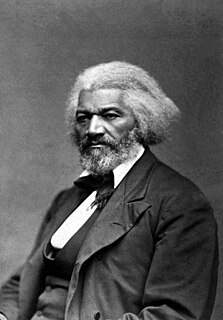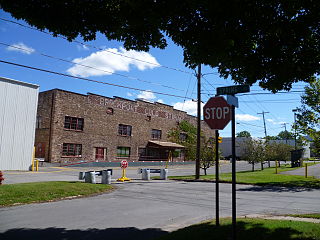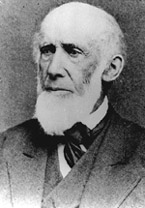Cover of hardback Book-of-the-Month Club edition | |
| Author | Samuel Hopkins Adams |
|---|---|
| Country | United States |
| Language | English |
| Genre | Folklore, Historical fiction, Reminiscence |
| Publisher | Random House, Inc. |
Publication date | 1955 |
| Media type | Print (Hardcover) |
| Pages | 312 pp |
Grandfather Stories is a book of 23 historical tales by journalist and novelist Samuel Hopkins Adams. Three were originally published in Woman's Day and 15 in The New Yorker . Most of the stories take place in upper New York State, along the Erie Canal. Those stories told by his grandfather occur in the 1820s; others, when Adams was a boy in the 1870s and 1880s. Adams does not state how much of the tales is fact and how much is fiction; some are clearly his own memoirs, others are historical fiction, and still others seem to be a reconstruction of his grandfather's life experiences.

Samuel Hopkins Adams was an American writer, best known for his investigative journalism and muckraking.

Woman's Day is an American women's magazine that covers such topics as homemaking, food, nutrition, physical fitness, physical attractiveness, and fashion. The print edition is one of the Seven Sisters magazines. The magazine was first published in 1931 by The Great Atlantic & Pacific Tea Company; the current publisher is Hearst Corporation.

The New Yorker is an American magazine featuring journalism, commentary, criticism, essays, fiction, satire, cartoons, and poetry. It is published by Condé Nast. Started as a weekly in 1925, the magazine is now published 47 times annually, with five of these issues covering two-week spans.
On the book's publication, the New York Times reviewer, Carl Carmer raved, "Few recent presentations of the national past—fictional or factual—carry so much detailed background, authentic, feeling atmosphere and engaging charm." [1]

The New York Times is an American newspaper based in New York City with worldwide influence and readership. Founded in 1851, the paper has won 125 Pulitzer Prizes, more than any other newspaper. The Times is ranked 17th in the world by circulation and 2nd in the U.S.
Carl Lamson Carmer was an American author of nonfiction books, memoirs, and novels, many of which focused on Americana such as myths, folklore, and tales. His most famous book, Stars Fell on Alabama, was an autobiographical story of the time he spent living in Alabama. He was considered one of America's most popular writers during the 1940s and 1950s.
A distinctive feature of the book is Adams's liberal use of his grandfather's archaic vocabulary and phrasings. "He has...the ability to bring obsolete words back to us with all their old life and vigor." [2] The book has been referenced by scholars of American speech [3] [4] and as a primary source in historical research on the early days of the Erie Canal. [5]
In language, an archaism is a word, a sense of a word, or a style of speech or writing that belongs to a historical epoch long beyond living memory, but that has survived in a few practical settings or affairs. Lexical archaisms are single archaic words or expressions used regularly in an affair or freely; literary archaism is the survival of archaic language in a traditional literary text such as a nursery rhyme or the deliberate use of a style characteristic of an earlier age—for example, in his 1960 novel The Sot-Weed Factor, John Barth writes in an 18th-century style. Archaic words or expressions may have distinctive emotional connotations—some can be humorous (forsooth), some highly formal, and some solemn.
Most of the sketches begin with the young Adams and his cousins sitting uncomfortably in their grandfather's parlor in Rochester, New York, hoping to distract him into telling a story instead of improving their morals. Myron Adams had had a colorful youth; in the early 1820s, his father won a contract to dig a section of the Erie Canal. As a result, he became an insider among canal folk. He was a well-respected businessman in the region: as such, he traveled frequently through upstate New York. Among his adventures, he was selected as judge for a pie-eating contest, watched the daredevil Sam Patch jump to his death from Rochester's High Falls, charmed the visiting English feminist Frances Wright, helped a runaway slave escape to Canada, and was present, Adams maintains, at the very first preview of the motion picture.

Rochester is a city on the southern shore of Lake Ontario in western New York. With a population of 208,046 residents, Rochester is the seat of Monroe County and the third most populous city in New York state, after New York City and Buffalo. The metropolitan area has a population of just over 1 million people. It is about 73 miles (117 km) east of Buffalo and 87 miles (140 km) west of Syracuse.

Sam Patch, known as "The Jersey Jumper", "The Daring Yankee", or the "Yankee Leaper" became the first famous American daredevil after successfully jumping from a raised platform into the Niagara River near the base of Niagara Falls in 1829.
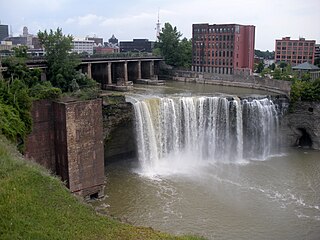
The High Falls are one of three voluminous waterfalls on the Genesee River, that flow through the city of Rochester in New York. The High Falls are located about 2 miles (3.2 km) upstream from the lower falls and act as their source. The High Falls area was the site of much of Rochester's early industrial development, where industry was powered by falling water. Brown's Race diverts water from above the falls and was used to feed various flour mills and industries, today the water is used to produce hydroelectric power.
The tales are nuggets of social history: among them, New Year customs in Rochester's elite "ruffleshirt" Third Ward, early professional baseball in Rochester, the corrupt matches that killed off professional rowing, and the invention of the detachable shirt collar in Troy, New York. Adams describes his meeting as a boy with the abolitionist and slave-rescuer Harriet Tubman, who was helped by his family after she settled in nearby Auburn.

New Year is the time or day at which a new calendar year begins and the calendar's year count increments by one.

Baseball is a bat-and-ball game played between two opposing teams who take turns batting and fielding. The game proceeds when a player on the fielding team, called the pitcher, throws a ball which a player on the batting team tries to hit with a bat. The objectives of the offensive team are to hit the ball into the field of play, and to run the bases—having its runners advance counter-clockwise around four bases to score what are called "runs". The objective of the defensive team is to prevent batters from becoming runners, and to prevent runners' advance around the bases. A run is scored when a runner legally advances around the bases in order and touches home plate. The team that scores the most runs by the end of the game is the winner.
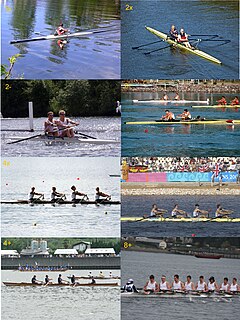
Rowing, often referred to as crew in the United States, is a sport whose origins reach back to Ancient Egyptian times. It involves propelling a boat on water using oars. By pushing against the water with an oar, a force is generated to move the boat. The sport can be either recreational for enjoyment or fitness, or competitive, when athletes race against each other in boats. There are a number of different boat classes in which athletes compete, ranging from an individual shell to an eight-person shell with a coxswain.
Grandfather Stories has been suggested as a travel guide to Upstate New York. [6]

Upstate New York is the portion of the American state of New York lying north of the New York metropolitan area. The Upstate region includes most of the state of New York, excluding New York City, the Lower Hudson Valley, and Long Island, although the precise boundary is debated. Major cities in Upstate New York include Buffalo, Rochester, Albany, and Syracuse.


